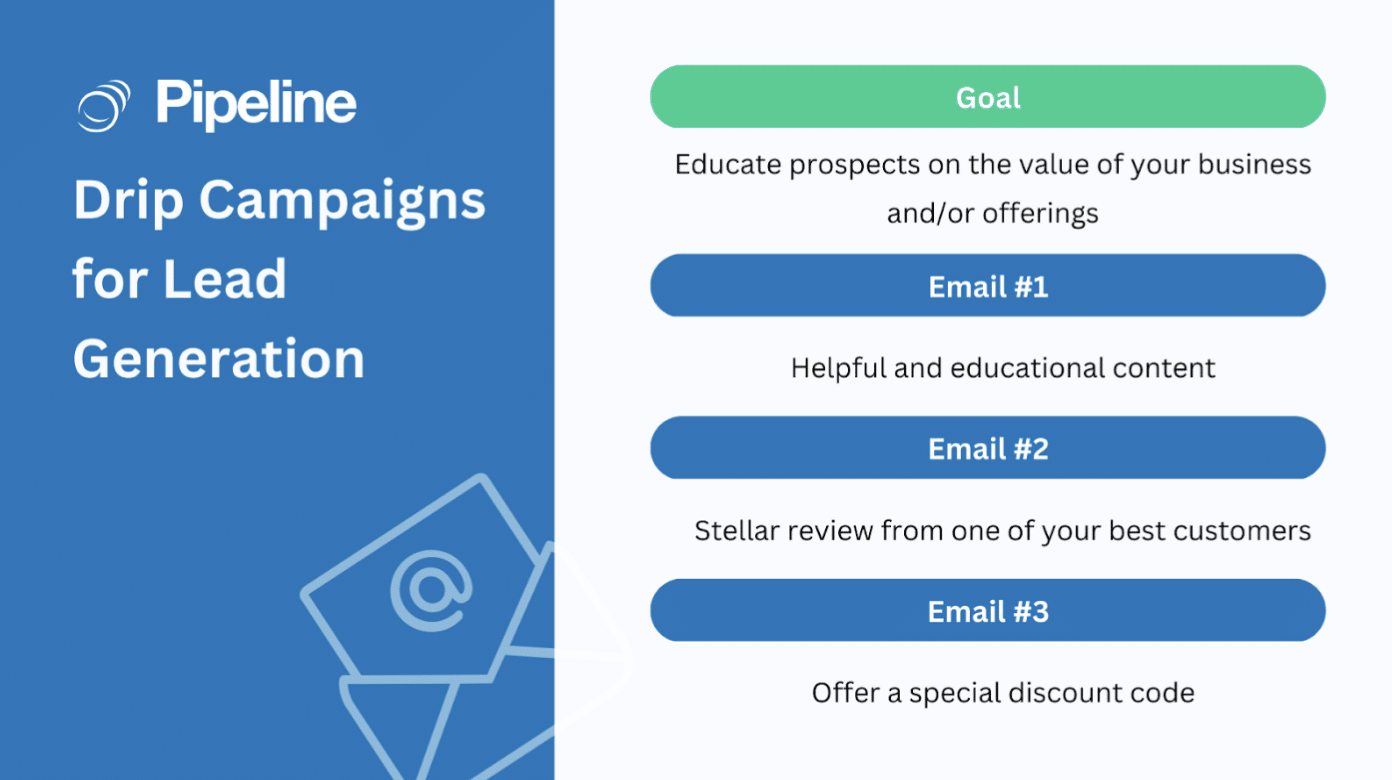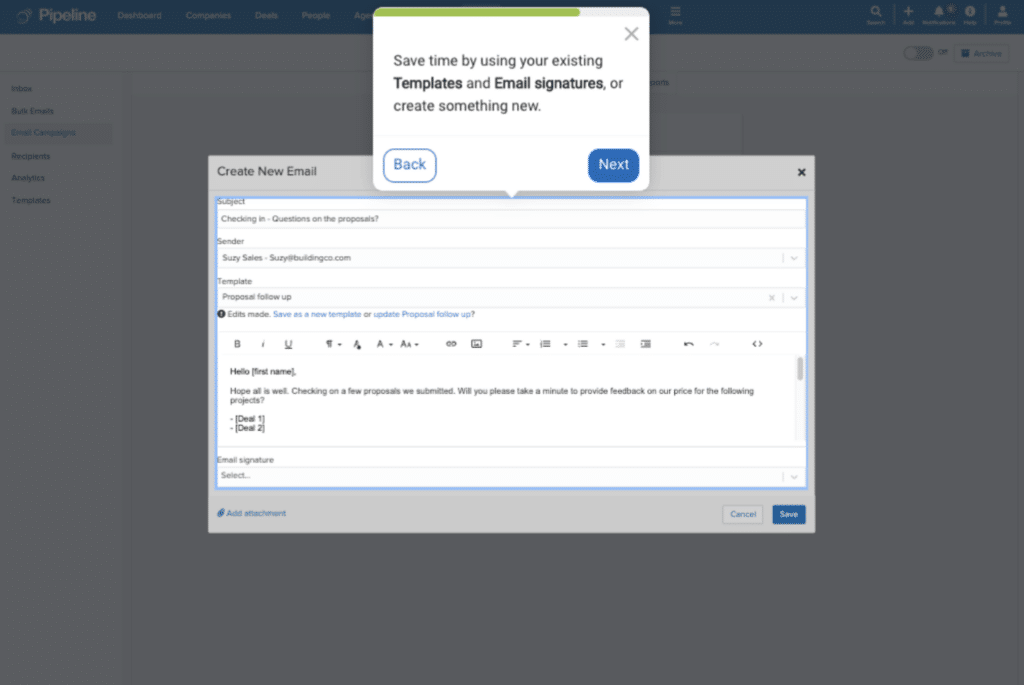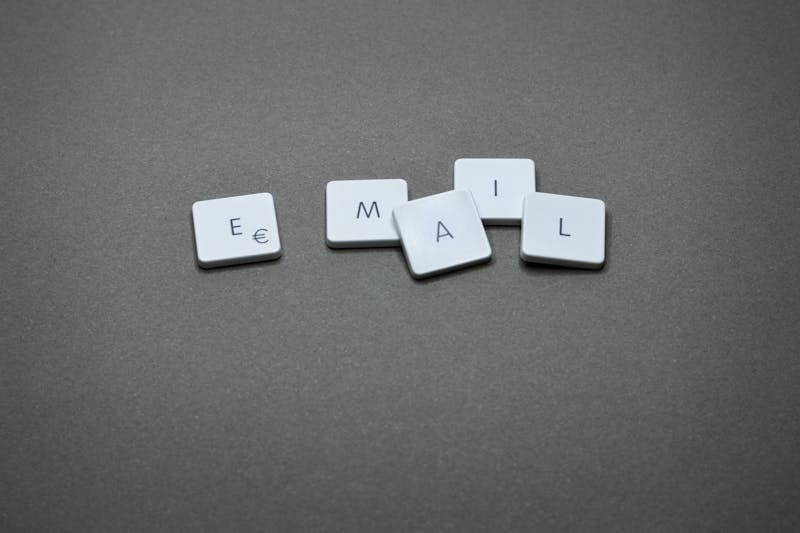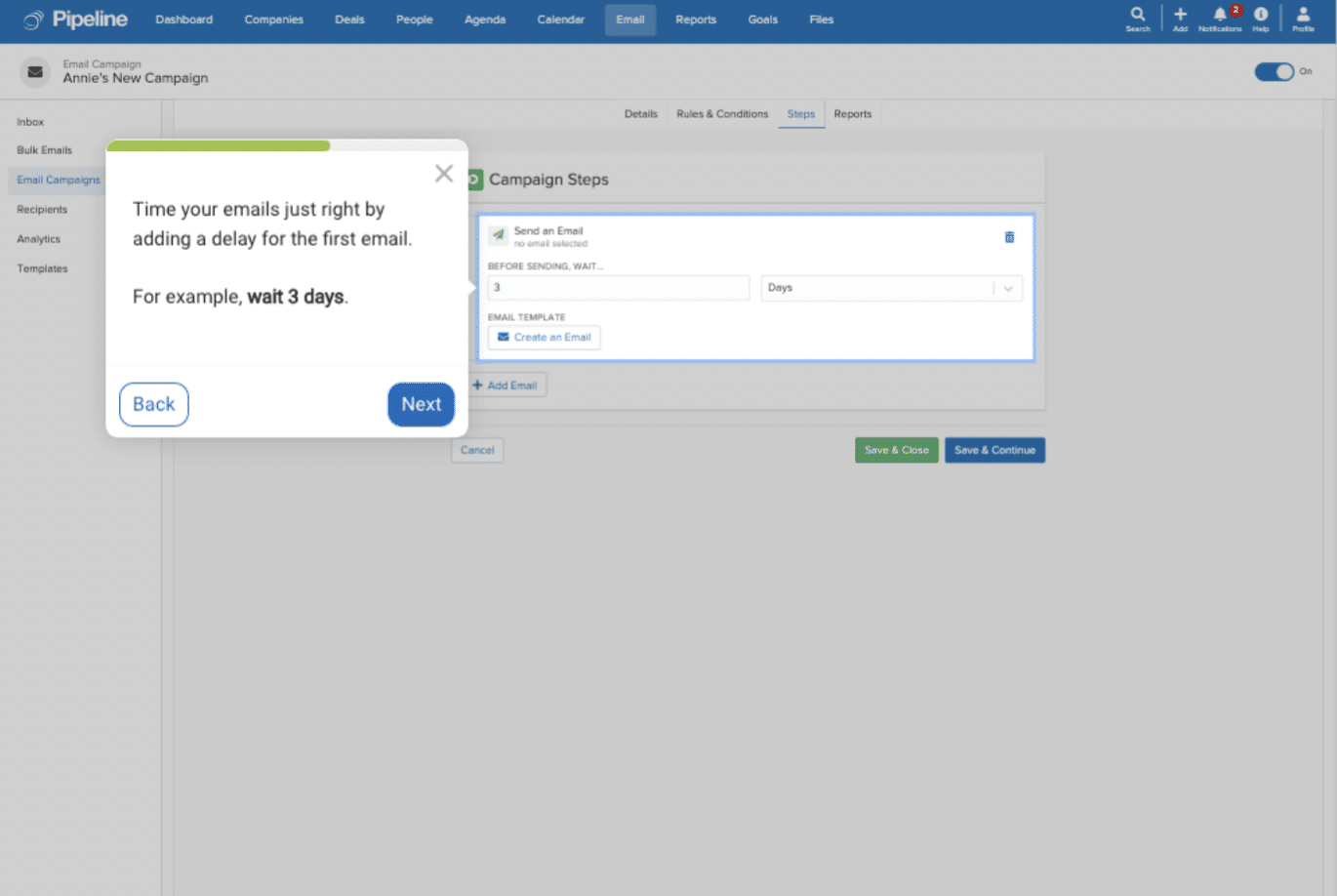Time is precious, and salespeople know this best. Between follow-up calls, creating estimations, and attending new meetings, you still need to find the time to write emails.
That’s where email drip campaigns come in handy. This automated solution allows you to double down on your lead-generation efforts while keeping track of all email touchpoints.
💡See how to activate the feature in your Pipeline CRM account.
Below, you will learn more about email drip campaign best practices, their benefits, and more.
What is a Drip Campaign?
A drip campaign is a series of automated emails sent to a specific audience at predetermined intervals (e.g., after X days) or after specific actions have taken place (e.g., new contact entries, changes in deal stages, or the contact responses to the email). This type of email approach can save you the headaches of manual emailing while allowing your prospects to be educated at a comfortable pace until they are ready to move forward.
Drip campaigns support a wide array of sales activities, including (but not limited to) welcoming new customers, staying in contact with past customers, cross-selling, and upselling. To give you a better understanding of drip campaigns, for the rest of this blog, we’ll focus on one of the use cases: lead generation.
Here’s an example of the email drip campaign sequence for lead generation.

As a customizable CRM, Pipeline enables you to modify the number of emails, the intervals between steps, and the triggers that will start and stop the sequence according to your campaign strategy.
Speaking of intervals, did you know that sending several emails within a short period can backfire on you? 33% of buyers are likely to turn off sellers’ proposals when they receive too frequent outreach. The key here is to find the sweet spot between timing and content value—and this is where drip campaigns can become the hero of your sales arsenal tool.
In a saturated market, your prospects likely receive several email campaigns from various brands every day. So, it is only natural for them to ignore or reject your sales pitch at the initial contact. In fact, one study shows that 60% of customers say ‘no’ four times before saying ‘yes’ to a sales pitch. This means persistence can boost your chances of turning prospects into buyers.
If we put the campaign into practice, it could look something like this: once a new contact is added, email #1 will be sent. After five days without a response, the system will send email #2, or once the contact responds, the sequence will stop—automatically. You can also start the drip campaign manually and let the rest of the sequence run in auto-pilot mode.
| This interactive demo shows the simplicity of setting up a drip campaign in Pipeline CRM. It’ll guide you through the step-by-step process and all the rules you can choose to accommodate your campaign needs. You can read a detailed breakdown of the product update here. |
5 Benefits of Email Drip Campaigns For Lead Generation
61% of marketers agree that lead generation is the most challenging task in their job. Therefore, it is wise not to waste any lead opportunities your teams have diligently collected in the CRM software. When you use the drip campaigns on your Pipeline CRM account, you’ll ensure every lead is appropriately treated, and in turn, you’ll get the following benefits:
1. Increased engagement
As mentioned, bombarding emails can be a deal breaker for many prospects. On the contrary, drip emails allow you to give some idle time for buyers to process your sales pitch one step at a time. They won’t feel as if they were pushed to buy your product.
Remember that building solid relationships takes time (which is the goal of using CRM software), and sending regular and personalized messages is the way to get there.
2. Improved lead nurturing
Some leads only require minimum touch points to turn them into buyers, while others still need a lot of pre-sales touch points. With drip campaigns, you can send different email sequences to leads based on their buying-readiness levels, behavior, or other criteria. This way, you’ll give them the appropriate treatment to move them further down the sales funnel.
3. Higher conversion rates and revenues
Consistent engagement fosters trust, and personalized guidance convinces prospects that your products or services can solve their problems. When this happens, they’ll be ready to purchase, increasing your business’ conversion rate. In fact, one study found that drip emails drive 180% more conversions than batch emails, contributing to 320% of increased revenue.
4. It’s resource-effective
The sequential actions and triggered-based automation are the two primary elements of drip campaigns. This means once you set up a campaign, it will run until all sequences are completed (or you cancel them). While the campaigns run in the background, you can focus on other pressing issues—saving you a lot of time and effort.
Additionally, the cost of running drip campaigns is relatively low for generating leads. You’ll just need to invest some time in creating the email templates (which can be reused), choose the recipients and the email-sending triggers (time- or action-based), and that’s it!

5. Gain data-driven insights
Every up or down is a learning experience. After conducting a few drip campaigns, you’ll have reliable data unique to your brand and target audience. Use this valuable information instead of guesswork to gain better results for your future drip campaigns.
7 Best Practices for a Successful Email Drip Campaign

Knowing how drip campaigns work and their advantages gives you a deeper understanding of how they can grow your business. The next step is to discover the best approaches to ensure you’ll gain the best results from your drip email campaigns.
1. Define your goals
Whether you use drip campaigns to nurture leads, grow customer loyalty, or achieve other goals, first, you must establish the goals. The more specific the goals, the better. If you don’t know where to begin, you can start by choosing specific KPIs that matter to you (e.g., number of booked demos or lead-conversion ratio) and expand your goals further.
| Pro tip: Converting leads to buyers comes with many challenges. We analyzed the most common problems and came up with seven practical solutions on how to overcome them. |
2. Segment your audience for email drip campaign
Once you know the goals, you need to group the campaign recipients. This could be based on demographics, lead sources, company types, etc. This way, you can send on-target messages and content that directly speaks to the readers.
3. Provide valuable information
Every prospect has different pain points. Thus, the more relatable the email content is, the likelier you’ll get a positive response. Show that you’ve researched and have the solution to their problems. Vary the types of content you send, from plain text to quoting a blog, a link to e-books, a case study summary, or an invitation to the upcoming webinar.
4. Personalize the messages
A drip campaign is principally an email campaign. So, don’t forget the basic rules of email marketing, such as choosing intriguing email subjects, addressing prospects by name, using engaging hooks, and keeping the emails concise. Furthermore, remember not to sound too selling. Nurturing leads will be easier if your emails sound friendly and humble but authoritative at the same time.
5. Set a respectful email frequency
Be cautious of the frequency and the number of emails you send. Overloading prospects can trigger them to unsubscribe or even report your email campaign as spam. However, lengthy delays between emails can also make your prospects lose interest or even forget about your brand. You need to find the balance that works for your audience.
| Pro tip: Add an unsubscribe link to your email to avoid being flagged as spam. Getting too many spam complaints can damage your campaign performance and brand reputation. |

6. Clear call-to-action (CTA)
Don’t underestimate the power of a CTA. After reading the emails, the CTA tells prospects what you want them to do next. Whether downloading an e-book, booking a demo call, or using the discount code, CTA can help you accomplish the campaign’s goals.
7. Monitor results and optimize the process
Practice makes perfect. If your first drip campaign doesn’t meet your expectations, use this as a learning opportunity. For instance, measure the engagement rates, see which messaging and marketing products (e.g., promotion codes and white papers) get clicked or converted the most, and analyze the best time to send the emails. So that next time, you’ll have better success in generating leads.
Final Thoughts on Email Drip Campaign Best Practices

Creating email templates and sending bulk emails (up to 1000 contacts per email campaign) have been helping Pipeline CRM users hook new prospects at scale. But, with the new drip campaign added to the feature lists, you can now amplify the results of your email campaign strategy with less effort.
Not only will you be free from manual work, but the sequential workflow and data-driven strategies will also create more consistent engagement and on-target messaging. These will help you turn leads into first-time buyers (for lead generation purposes) or even turn buyers into loyal customers (e.g., for upselling and cross-selling purposes).
Start using the new drip campaign feature today with NO up-charges (for the Grow subscription tier only)—or sign up for a free 14-day demo. Massive outreach improvement awaits!



